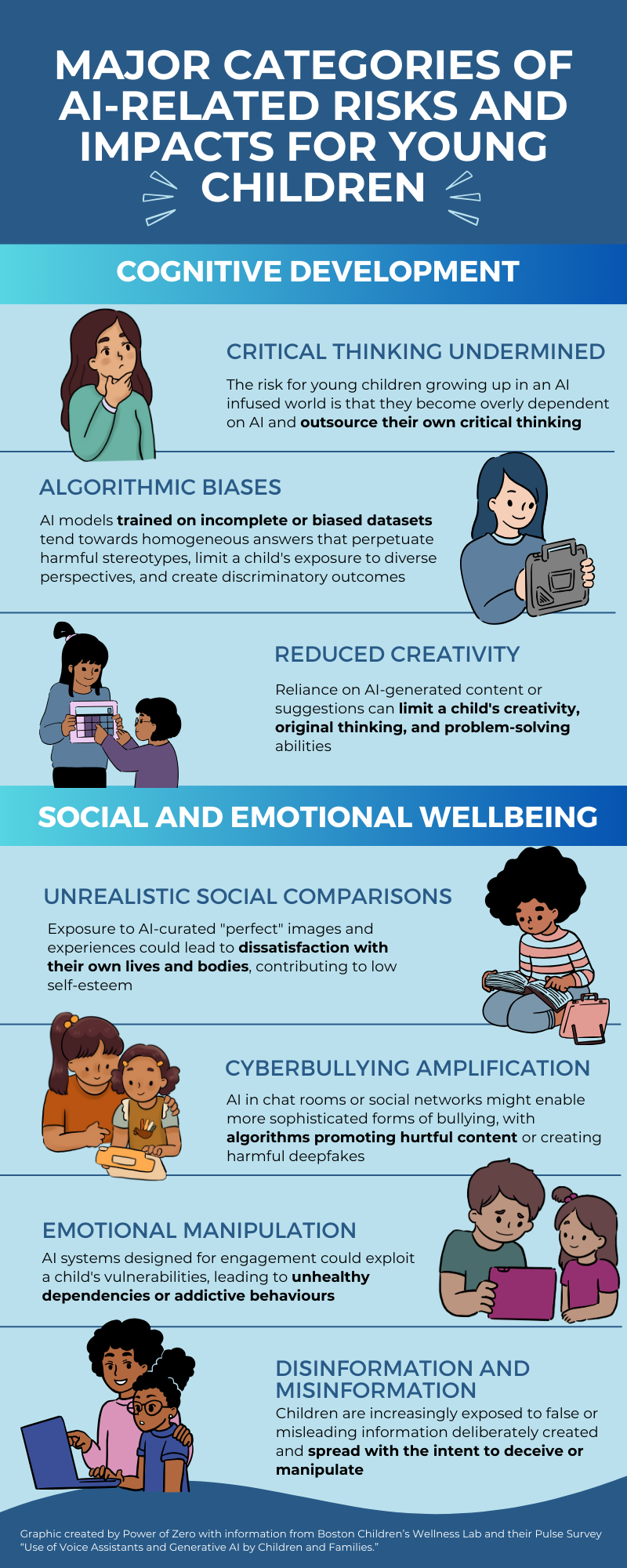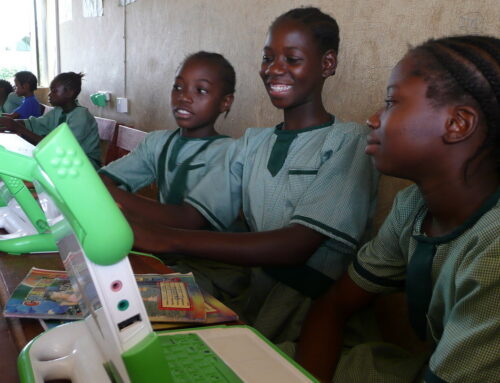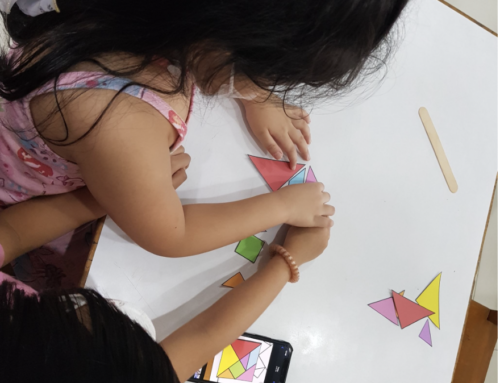Generative AI, the latest phase of the digital revolution, is shaping all our lives. Is it a force for good or does it bring a hidden threat to our children? While AI holds the promise of boundless creativity and learning, concerns persist about its impact on our children’s cognitive development, creativity and emotional wellbeing. As parents, educators, and guardians of children’s online lives, it’s time we confront the complexities of artificial intelligence and youth.
What is generative AI?
For many of us, the prospect of machine learning for kids and robots shaping their future sounds scary. This is mainly because most of us don’t fully understand what it all means, how it works, or what’s on the horizon.
Generative AI is the new frontier of artificial intelligence (AI) that’s good at making new things, like writing stories, drawing pictures, or composing music. AIs such as ChatGPT or online chatbots use generative AI to communicate back and forth with humans. They’ve read tons of information and learned from it. That’s why they are referred to as “Large Language Systems”. So, when you give a question to them, they use what they’ve learned to come up with a response that they think fits.
Do your children benefit from AI assistants such as Siri or Alexa? Do they use educational apps like Duolingo? Do they enjoy watching YouTube Kids? All of these tools and apps use data to continually learn, predict and create.

If the answer’s yes, generative AI is already part of their lives, and as a family, you’re not alone.
Findings from the Boston Children’s Digital Wellness Lab found that most of the parents surveyed believed:
- Voice assistants positively impact their children’s learning, creativity, and social skills.
- Voice assistants improve family bonding, especially for younger children.
- Around 60% of children use generative AI tools like ChatGPT primarily for seeking information and creative activities.
The benefits of generative AI in education
A 2024 paper from the OECD, looking at how AI impacts society, economies, and people, explains how AI can help students learn better with personalised learning tools and assist those with disabilities or daily tasks.
AI technology can curate and recommend educational content, including articles, videos, podcasts, and online courses. This allows children to explore diverse topics, perspectives, and learning materials beyond those available in traditional classrooms.
Artificial intelligence can open doors and encourage children to explore various creative mediums, such as drawing, storytelling, and animation. It can also facilitate collaborative creativity by enabling children to work together on projects and share ideas in real-time.
Generative AI promises a wealth of knowledge at our fingertips, but does it fuel creativity or stifle originality?
The irony in the findings from the Boston Wellness Lab is that many parents feel their children’s creativity and critical thinking improve with the involvement of AI in their lives, yet these are two of the specific areas where experts have concern.
They are especially concerned that young children, who are developing the critical thinking to know whom they can trust and what they can believe, are particularly vulnerable to AI.
You can see from the infographic (right) the major categories that Boston Children’s Digital Wellness Lab found to be disadvantages of generative AI, as well as risks and impacts for young children.
Problem-solving skills are not yet developed at a young age, so when AI presents ready-made answers or simplifies complex issues, children skip this vital learning step and can fail to develop the skills to question, analyse, and form their own judgments.
The same goes for creativity. If ideas are presented too easily and swiftly, the iterative process of creative thinking, trying out new ideas and failing, and designing new solutions is lost.
AI has the power to blur the line between things made by people and things made by computers, which can make us wonder what’s real and what’s not. This raises some important questions about what’s true and what is false when it comes to the stuff we see and hear online. It’s like a big puzzle we have to figure out together, especially when it comes to what our kids see and believe.
Generative AI holds many of the same dangers for young people as the internet, social media or online gaming. Bullying, manipulation, unhealthy comparisons, scams, and misinformation – all difficult enough for us as adults to navigate, never mind young people.
Children need to develop social skills in a healthy environment in order to learn, grow and understand the world around them. Could increasing over reliance on AI tools, apps and algorithms hinder this development?
How bias can form where the boundaries between imagination and algorithm blur
AI bias poses a significant risk, potentially increasing discrimination based on race, gender, or socio-economic status. This can hinder equal education opportunities for children. But it also can mean standardised answers that are not relatable, relevant or appropriate.
The digital literacy gap further exacerbates these risks, leaving less tech-savvy kids vulnerable to AI-related biases, widening educational disparities, and perpetuating social inequalities.
And can we be sure that generative AI developers fully comprehend the sensitivities of a child’s development across various cultural, social, and economic backgrounds? Limited understanding can result in the design of educational content or systems that are not inclusive or effective for all children.
How can we maximise children’s well-being through the positive use of AI while mitigating risk?
To prepare for an AI-infused future, parents and educators need to enhance their understanding of AI’s capabilities, risks, and ethical implications. This includes investing in digital literacy, privacy protection, training, and regulatory frameworks to ensure responsible AI development and usage.
But the reality is that we just don’t yet know enough about the effects, risks and benefits of generative AI in education. We need longitudinal studies to establish this insight with any certainty. But that doesn’t mean we should just ride the AI wave until then. Importantly, technology companies have a huge responsibility to consider the findings of existing AI studies. Governments also need to make rules to ensure AI is used safely and fairly by children.
However, amidst this technological evolution, we must not lose sight of the broader picture of child development – ensuring our children receive a well-rounded upbringing with diverse offline and face to face influences and activities.
It’s not just about knowing how to use technology, but also about understanding how to evaluate information critically. By equipping children with the ability to discern credible sources from misinformation, identify persuasive tactics, and think critically about what they encounter online, we empower them to navigate the vast digital landscape confidently and responsibly.
By creating an environment of trust and offering guidance, parents can encourage their children to share their online experiences openly and seek help when needed. Regular conversations about internet usage help parents stay informed about their children’s online activities, allowing them to provide relevant guidance and support. promoting safe and responsible online behaviour among their children.







Leave A Comment